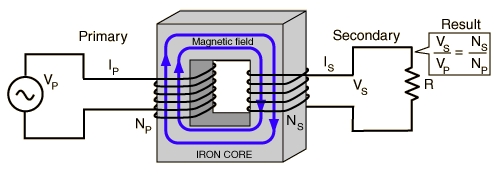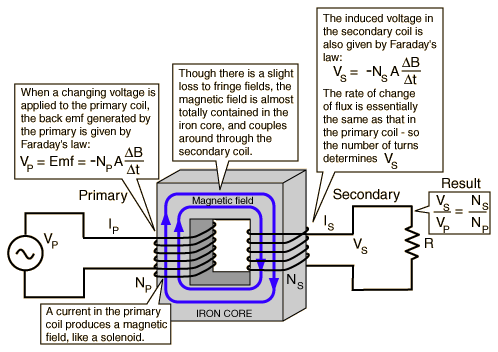Ideal Transformer Calculation
The ideal transformer neglects losses to resistive heating in the primary coil and assumes ideal coupling to the secondary (i.e., no magnetic losses).
Notes: For this exploratory calculation, you may enter data for any parameter except the power. Then click on the active text for the parameter you wish to calculate; values will not be forced to be consistent until you do. For primary calculations, the voltage and number of turns in the secondary will be considered to be established and vice versa. Default values will be entered for unspecified parameters, but all values except the power may be changed.
|
Index
Transformer concepts
Faraday's law concepts |


